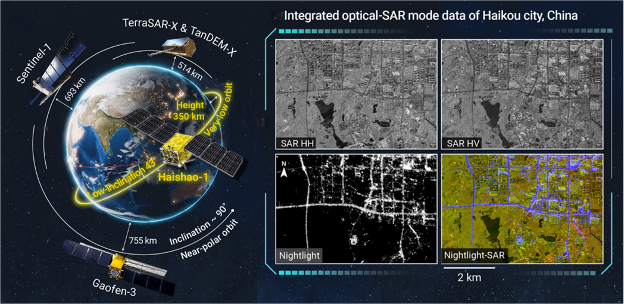Haishao-1 Satellite Ushers in New Era of Low-Latitude Earth Observation
A new study published in The Innovation on May 12, 2025, highlights the launch of Haishao-1 (HS-1), China's first low-inclination orbit Synthetic Aperture Radar (SAR) satellite—marking a breakthrough in global Earth observation. Developed by the Aerospace Information Research Institute (AIR) of the Chinese Academy of Sciences, in collaboration with the Innovation Academy for Microsatellites and AIRSAT Technology Group, HS-1 combines a lightweight design with high-performance imaging capacities. Uniquely positioned in a low-inclination orbit, the satellite is specifically designed to fill long-standing observational gaps in equatorial and tropical regions—areas that are frequently obscured by clouds and under-observed by conventional polar-orbiting satellites by delivering detailed, frequent radar imagery with remarkable clarity.
While SAR has revolutionized Earth observation with its all-weather, day-and-night imaging capability, most SAR satellites operate in sun-synchronous polar orbits, leaving low-latitude regions consistently underobserved. HS-1 challenges this convention. Launched on December 4, 2024, it operates in a low-inclination orbit at 43°and a Very Low Earth Orbit (VLEO) of just 350 km. This configuration significantly boosts its spatial resolution and imaging performance, offering clearer, more detailed observations of equatorial and tropical areas.
HS-1's low-inclination orbit offers revisit rates up to 5.7 times daily observations over the South China Sea compared to traditional SAR satellites. Its very low Earth orbit enhances radar performance, supporting 1-meter resolution imaging in stripmap mode while also reducing power demands and payload size. These features enable more accurate quantitative retrieval of wave spectra and underwater bathymetry, offering valuable insights into ocean dynamics.
Beyond its SAR payload, HS-1 carries an integrated nightlight sensor to capture low-light emissions from urban and maritime sources. This dual-sensor system offers a multi-dimensional perspective on urbanization, transportation, and maritime activity. Its non-sun-synchronous orbit allows for flexible revisit times, making it well-suited to monitor rapidly changing human activities and environmental processes in tropical regions.
Looking ahead, the HS series will expand with the upcoming launches of HS-2, -3, and -4, forming a constellation to close the low-latitude data gap in Earth observation. As the first in the series, HS-1 marks a significant step forward in China's advancement of spaceborne SAR technology, paving the way for more comprehensive and responsive Earth observation.

The orbit and imaging of Haishao-1 satellite. (Image by AIR)



News & Events